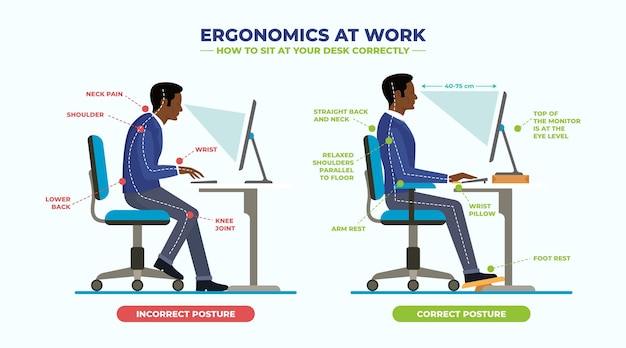Spending hours at a desk doesn’t have to mean stiff shoulders, lower back pain, or declining fitness. In fact, with the right strategies, office workers can not only prevent common injuries but also improve cardiovascular health by boosting their VO₂ max—the gold standard for measuring aerobic fitness. This comprehensive checklist gives you actionable, science-backed steps to stay injury-free and enhance endurance, all tailored to the realities of a 9-to-5 workday.
Sedentary behavior is linked to increased risks of musculoskeletal disorders, cardiovascular disease, and metabolic syndrome. Poor posture, repetitive strain, and lack of movement contribute to neck pain, carpal tunnel syndrome, and chronic back issues. Meanwhile, low VO₂ max—a measure of how efficiently your body uses oxygen during intense exercise—is associated with higher mortality rates, even in otherwise healthy individuals.
The good news? Small, consistent changes can make a big difference. This guide combines injury prevention techniques with cardiovascular strategies designed to fit into your office routine.

Set a timer to stand, stretch, or walk for 2–3 minutes each hour. Use this time to:
Weak core and upper back muscles contribute to slouching and strain. Incorporate these exercises 3 times a week:
Avoid ulnar deviation and wrist extension. Use an ergonomic keyboard and mouse. Keep both devices at the same level and close to your body. Consider voice-to-text tools to reduce typing strain.
Dehydration can lead to muscle fatigue and cramps. Aim for 1.5–2 liters of water daily. Use a lumbar roll or small pillow to support your lower back and avoid slouching.
VO₂ max reflects your cardiovascular efficiency. Higher levels mean better stamina, improved heart health, and greater energy. The best part? You don’t need a gym to improve it.
Aim for 30 minutes of brisk walking most days. Break it into segments if needed—10 minutes in the morning, during lunch, and after work. Use a fitness tracker to monitor pace and distance.

Use short breaks for high-intensity intervals:
Repeat 3–5 rounds, 2–3 times per day. These bursts elevate heart rate and stimulate aerobic adaptation.
Climbing stairs is a powerful way to improve cardiovascular fitness. Even 5–10 minutes a day can contribute to VO₂ max gains over time.
Include at least 150 minutes of moderate-intensity or 75 minutes of vigorous-intensity aerobic activity weekly. Options include:
Consistency is key. Use these simple methods to monitor improvements:
Improving your health at work isn’t about drastic changes—it’s about consistent, manageable actions. By preventing injuries and boosting your VO₂ max, you’ll feel more energized, focused, and resilient, both at the office and beyond.

Wellness

Wellness

Wellness

Wellness

Health

Health

Fitness

Wellness

Wellness

Fitness

Fitness

Fitness

Health

Fitness

Health

Health